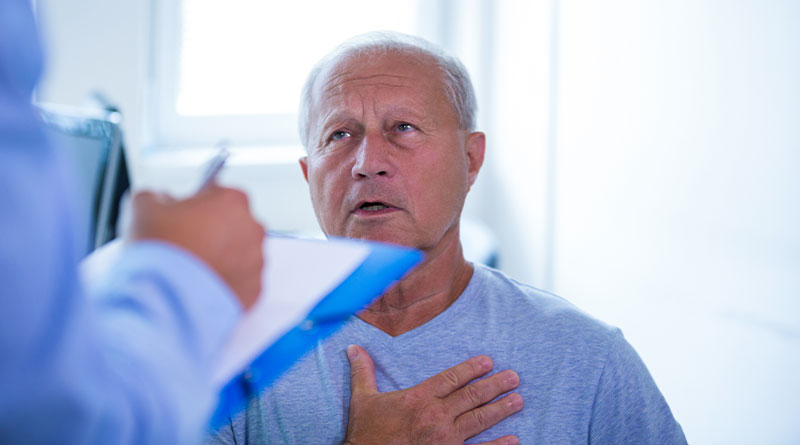Cardiac arrest is a serious medical condition that occurs when the heart suddenly stops beating, which can lead to a lack of oxygen and blood flow to the brain and other organs. It is a life-threatening emergency that requires immediate medical attention.
According to the American Heart Association, more than 350,000 out-of-hospital cardiac arrests occur annually in the United States, and around 90% of those who experience cardiac arrest outside of a hospital setting will die.
Cardiac arrest can occur in people of all ages, but it is more common in older adults and those with underlying heart conditions.
In this article, we will discuss the causes, symptoms, and prevention of cardiac arrest.
Causes of Cardiac Arrest
When the heart stops beating abruptly, it can cause cardiac arrest, resulting in insufficient oxygen and blood supply to vital organs such as the brain. There can be several underlying causes of cardiac arrest, including:
- Coronary artery disease: The leading cause of cardiac arrest is coronary artery disease. It occurs when the blood vessels that supply the heart with oxygen and nutrients become narrowed or blocked, leading to a heart attack
- Heart rhythm problems: Abnormal heart rhythms, such as ventricular fibrillation or ventricular tachycardia, can cause the heart to stop beating effectively, leading to cardiac arrest.
- Cardiomyopathy: This is a disease of the heart muscle, which can weaken the heart and make it more prone to cardiac arrest.
- Congenital heart defects: Some people are born with heart defects that can increase the risk of cardiac arrest.
- Drug overdose: Certain drugs, such as opioids or stimulants, can cause cardiac arrest by disrupting the heart’s normal electrical activity.
- Trauma: Severe trauma, such as a blunt force injury to the chest, can cause cardiac arrest.
- Electrical shock: Exposure to high-voltage electricity can disrupt the heart’s electrical activity and cause cardiac arrest.
- Hypothermia: Extremely low body temperature can slow the heart’s electrical activity and lead to cardiac arrest.
Symptoms of Cardiac Arrest
Cardiac arrest can occur suddenly and without warning. The most common symptoms of cardiac arrest include:
- Sudden loss of consciousness
- No breathing or shallow breathing
- No pulse or heartbeat
- Chest pain or discomfort
- Nausea or vomiting
- Dizziness or lightheadedness
- Fatigue or weakness
Prevention of Cardiac Arrest
Preventing cardiac arrest involves making lifestyle changes and managing underlying medical conditions that increase the risk of cardiac arrest. Here are some steps to prevent cardiac arrest:
- Eat a healthy diet: A heart-healthy diet rich in fruits, vegetables, whole grains, lean protein, and healthy fats can help lower the risk of heart disease and cardiac arrest.
- Exercise regularly: Regular physical activity can help maintain a healthy weight, reduce stress, and lower the risk of heart disease.
- Quit smoking: Smoking is a major risk factor for heart disease and cardiac arrest. Quitting smoking is one of the most effective ways to prevent cardiac arrest.
- Manage underlying medical conditions: If you have high blood pressure, high cholesterol, or diabetes, work with your healthcare provider to manage these conditions and reduce your risk of heart disease and cardiac arrest.
- Avoid illicit drugs: Certain drugs, such as cocaine and methamphetamine, can increase the risk of cardiac arrest. Avoiding these drugs can help prevent cardiac arrest.
- Learn CPR and how to use an automated external defibrillator (AED): CPR and AED training can help save lives in the event of cardiac arrest.
- Get regular check-ups: Regular check-ups with your healthcare provider can help identify and manage any underlying medical conditions that increase the risk of cardiac arrest.
Treatment for Cardiac Arrest
Cardiac arrest is a medical emergency that requires immediate treatment to restore normal heart function and prevent brain damage and death. The following are some of the treatments for cardiac arrest:
- Cardiopulmonary resuscitation (CPR): CPR is a lifesaving technique that involves compressions to the chest and rescue breaths to help maintain circulation and oxygenation to the body.
- Defibrillation: Defibrillation involves the use of an automated external defibrillator (AED) or an implantable cardioverter-defibrillator (ICD) to deliver an electric shock to the heart to restore a normal heart rhythm.
- Medications: Medications, such as epinephrine and amiodarone, may be given to help restore normal heart function.
- Coronary angiography and percutaneous coronary intervention (PCI): If the cause of cardiac arrest is a blockage in the coronary arteries, coronary angiography, and PCI can be performed to open the blocked artery and restore blood flow to the heart.
- Hypothermia therapy: Cooling the body to lower the body temperature can help protect the brain from damage caused by a lack of oxygen during cardiac arrest.
- Long-term management: After successful resuscitation from cardiac arrest, long-term management of underlying medical conditions, such as coronary artery disease, heart failure, and arrhythmias, is important to prevent future cardiac events.
Conclusion
Immediate treatment is crucial when experiencing cardiac arrest, which is a medical emergency that poses a serious threat to life. Understanding the causes, symptoms, and prevention of cardiac arrest can help you reduce your risk of this condition. By eating a healthy diet, exercising regularly, managing stress, quitting smoking, managing chronic conditions, and learning CPR, you can take steps to keep your heart healthy and reduce the risk of cardiac arrest.
If you or someone around you experiences symptoms of cardiac arrest, it is essential to call for emergency medical help immediately. Remember, quick action can save lives.
Sahil Sachdeva is the Founder of curemedoc.com and a Digital Marketing professional with years of experience. If you need help in Content writing and want to increase your website ranking, connect with him, as he has some premium websites where you can share blogs with DoFollow links and increase your website’s ranking on Google.


